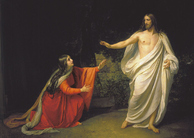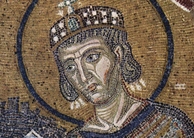Featured Article:The Sermon on the Mount: Is it Livable?
By
2010, Vol. 2 No. 11 | pg. 1/1
IN THIS ARTICLE
KEYWORDS
IntroductionWhen the Preacher wrote, “of making many books there is no end” [KJV Eccles. 12:12] he did not anticipate the mass of articles, scholarly papers and textbooks that would be written about Jesus’ address given to a group of disciples on a hillside in Galilee, but the statement nevertheless can be applied to the literature surrounding what we now call the Sermon on the Mount, recorded in Matthew 5-7 and Luke 6:20-49. More than thirty years ago, W.S. Kissinger listed nearly 150 pages of bibliography on the Sermon (Crump 3), and judging from the attention that this most famous ethical text is still receiving there is no end in sight for the layers of analyses that keep being generated. It would be presumptuous to think that anything new could be expressed in this short paper; however, the intent is not to present new material, but merely to add a new set of eyes to a synopsis of some of the existing material. More specifically, the material that will be addressed relates to a small segment of the literature on the Sermon on the Mount, namely the subject of the application of the Sermon on the Mount in the life of the contemporary Christian, who will be referred to in this paper as the “modern disciple.” In order to reach the goal of application some light must first be shed on the relationship between the Sermon on the Mount and the Old Testament, and also to the other ethical teachings of Jesus. The complex weave of ethics, eschatology and the Kingdom of God cannot be fully addressed in this synopsis; however, neither can it be entirely neglected, as the Sermon on the Mount cannot be properly discussed without at least partially untangling these three topics. The Dictionary of Jesus and the Gospels calls the relationship of ethics to eschatology and the Kingdom of God “one of the most convoluted and confusing chapters in modern Gospel study” (DJG 210). Relationship to the Old TestamentEven a cursory reading will reveal that there is a relationship between the Sermon on the Mount and the Law in the Old Testament. A closer reading will readily yield three possibilities: either the Sermon on the Mount presents a new Law, refines the Old Testament Law, or is something other than Law. In Matthew 5:17-20 Jesus makes it clear that He has not come “to abolish the Law and the Prophets”, but to “fulfill them” [NIV]. Congdon, who looked into the so-called “antitheses” in 5:21-48 in order to examine whether these verses denied or contradicted the Law, has analyzed the question of whether Jesus sustained the Law in Matthew 5. In response to the assertion that Jesus had abrogated the Law before the crucifixion he concludes, “(1) that Jesus abrogated some unscriptural traditions, (2) that He corrected some wrong interpretations, but (3) that He did not abrogate Old Testament legal injunctions. He confirmed them for Jewish people living before Calvary.” (125)Congdon’s analysis, sound as it is, does not delve into the very nature of the Sermon on the Mount—i.e., what type of oratory [or “writing”, in the case of the account in Matthew’s Gospel] is the Sermon of the Mount? As Hawkins puts it, “Was it the purpose of Jesus merely to point out the correct meaning of the Law of Moses, or was He setting forth new principles, opposed to or higher than the principles of Law, which were to become the constitution of the Kingdom?” (1). Although the questions surrounding the nature of the Sermon on the Mount will seemingly never be fully answered, a significant clue can be gleaned from observing what it is not. Matthew 5:20 implies that the Sermon does not have solely the flavor of Mosaic Law, at least not in the rigorous Old Testament sense. The “righteousness of the Pharisees” was based on the Law, both Written and Oral, and yet Jesus said that their righteousness was not enough to grant entry into the Kingdom of Heaven. Keeping in mind the brevity and the goal of this paper, namely the application of the Sermon on the Mount to the modern disciple, the discussion of its complex but fascinating Old Testament roots will have to be curtailed [Worth devotes an entire textbook to the Old Testament roots of the antitheses]. However, a review of eschatology and the Kingdom of God cannot be so easily curtailed, as these issues are closely associated with the contemporary application of the Sermon. Some of the contrast that has been brought forward between the Sermon on the Mount and the New Testament epistles can be smoothed through an understanding of the Kingdom of God. The concept of the “Kingdom of God” was well understood by the Jewish community, who were the first hearers of the Sermon on the Mount. The Jewish nation was waiting for the arrival of a kingdom that would deliver them from the oppressive Roman order. When Jesus spoke of the “Kingdom”, the hearts of the Jews resonated with anticipation. With the advent of the Gentile mission, which in time overtook the original Jewish mission, there was a need in the predominantly Gentile Church for a terminology that was less Jewish, to avoid confusion in the minds of the new Christian converts. The absence of the Kingdom of God in the epistles does not minimize its reality, or its eschatological significance. Some thinkers, such as Albert Schweitzer, have placed so much emphasis on the eschatology of the Sermon on the Mount that they have rendered it meaningless—Schweitzer’s work led him to believe that Jesus was mistaken in His anticipation of an imminent eschaton, and if one understands the Kingdom of God to be solely expressed in an earthly rule under the absolute sovereignty of God as the King, then this places the Sermon in a sort of limbo, not having a home in this present world with its [presumably] unfulfilled arrival of the Kingdom. The difficulties with the timing of the arrival of the Kingdom of God can be made more tractable when the Kingdom of God is paralleled with important doctrines of the New Testament, such as eternal life and salvation. Even though salvation is an eschatological concept, it still finds realization in the past and in the present. This is represented in a commonly used precept which states that we “were” saved, we “are” saved, and we “will be” saved. The fact that the Kingdom of God has not been fully realized on earth does not preclude that it has already “come”. This becomes important when deciding how to apply the Sermon on the Mount, because it is addressed to the children of the Kingdom. This last statement is presented without proof, but some help in deducing it can be found through identifying the intended audience of the Sermon. Examining the first and the last two verses of the Sermon on the Mount, it appears that the immediate hearers were the disciples and that the crowd overheard what was said, in a kind of ripple effect. It must be remembered that it is in fact the King that is preaching the Sermon, the One who proclaimed that the “Kingdom of God is at hand”. In fact, an important key to understanding how to apply the Sermon on the Mount resides in the dissolution of the separation between King Jesus and the Kingdom of God. Paul Tillich expresses this dissolution in the following fashion: The new state of things will be created with the second coming, the return of the Christ in glory. In the period between the first and the second coming the New Being is present in him. He is the Kingdom of God. In him the eschatological expectation is fulfilled in principle. Those who participate in him participate in the New Being, though under the condition of man’s existential predicament and, therefore, only fragmentarily and by anticipation (118). Relationship to Other Ethical Teachings of JesusThere is a parallel to the Sermon on the Mount in Luke 6:20-49. This parallel account has been named the Sermon on the Plain, based on Luke’s introductory remark in v.17: “He went down with them and stood on a level place.” [NIV]. It is generally recognized that both versions are respective conflations from a common Q source. The order of the material is the same, except for the Golden Rule, which Matthew delays until his summary-climax in 7:12. The two accounts of the sermon are structurally similar; however, there is an added detail in Luke’s account that may have implications for the practical application of the sermon material. In two of the beatitudes and two of the woes, Luke adds the word “now”. This addition may reflect the evangelist’s concern for the application of the sermon to the Christian life in the present state. The metaphors of salt and light in Matthew’s account have received considerable attention in a number of contexts, particularly in evangelism. As expressed by Stott, “We are all familiar with salt and light. They are two of the most common household necessities. They are found in virtually every home in every culture throughout the world.” (129-130). These metaphors have universal appeal as well as ethical implications. Salt and light make the ethic in the Sermon on the Mount a practical ethic. The disciples are meant to season and to illuminate their world, and it may not be too great an extension to state that the Sermon material directly relates to the quality of the salt and the light. The underlying principle is that of proper relationships and how the quality of relationships impacts people in all settings. The metaphors of salt and light therefore help to connect the Sermon on the Mount with the corpus of Jesus’ ethical teaching, which is always based on relationships. Another overarching theme in the Sermon on the Mount, which helps connect the Sermon to other ethical teaching of Jesus, is found in the concept of “goodness”. The word “good” is found eleven times in Matthew 5-7. “It is of paramount importance in assessing the ethical teaching of Jesus to consider his idea of the good, for this serves as the norm by which all human acts must be judged.” (Guthrie 896-897). The origin of goodness becomes important in the application of the Sermon on the Mount. Can goodness be generated through exhortations, such as those provided by Jesus in his Sermon? Or does the Sermon on the Mount lead by example in presenting how an already-present goodness should be translated into actions? Practical Applications for the Modern DiscipleThe foregoing background to the Sermon on the Mount, along with a few overarching ethical ideas in the teaching of Jesus are cursory at best, considering the sea of literature on the Sermon as a whole or in part. This information was nevertheless presented in order to better understand if, or how, this crucial teaching of Jesus can be applied directly or indirectly to the modern disciple of Jesus Christ. The history of application of the Sermon on the Mount is nearly as vast as the history of its interpretation. Interpretation and application are evidently related. Harvey King McArthur lists twelve schools of thought on the application of the Sermon. It is not the purpose of this paper to examine the various ideas about application, or even to defend a particular view. Rather, the thoughts of four practitioners are presented in order to show how some of the great thinkers of the past have approached the Sermon and to use these approaches as a means of bringing out the key points discussed earlier in the paper. AugustineAugustine is one of the earliest thinkers who prepared a treatise on the Sermon on the Mount. “He who had investigated all philosophical systems of his times in the search of truth, found here a complete rule of life, the best philosophy of life.” (Jepson 3). Augustine’s view is that there is a double standard for the application of the Sermon. The general population need only concern themselves with the general precepts, whereas only the most pious, predominantly the clergy and monks, could attain the level of practical application of its specific ethical points. This view does not line up with an application of the Sermon to all who are part of the Kingdom of God, and it would also be at odds with the concept that all believers are to be salt and light. Martin LutherLuther divided the world into spiritual and secular realms and believed that the Sermon on the Mount can only be fully applied in the spiritual realm. McArthur names this “the two realms view”. Under this view, any interaction with the secular world would require various degrees of compromises. This view suffers similar problems as the double standard view, even though it does allow for a little more practical application in daily affairs. Leo TolstoyLeo Tolstoy is closely associated with the Sermon on the Mount and frequently appears in the Sermon’s literature. Tolstoy is held as an example of the literalist or absolutist view. The man who was declared by Virginia Woolf to be the “greatest of all novelists” is certainly not a slipshod thinker. There is no clear picture of Tolstoy’s views on grace or the atonement, but the transformation of Tolstoy’s life illustrates the power of Kingdom ethics. Without debating whether Tolstoy had “faith unto salvation”, as the modern disciple would phrase it, the following excerpt from My Religion sheds some light on his transformation as a result of his exposure to the ethical teachings of Jesus, and particularly the Sermon on the Mount: I have lived in the world fifty-five years, and after fourteen or fifteen years of my childhood, for thirty-three years of my life I was, in the proper acceptation of the word, a nihilist,—not a socialist and revolutionist, as is generally understood by that word, but a nihilist in the sense of one who believed in nothing. Five years ago I came to believe in the doctrine of Christ, and my whole life underwent a sudden transformation. What I had once wished for I wished for no longer. What had once appeared to me good now became evil, and the evil of the past I beheld as good (Kaufmann 45). What seized Tolstoy the most is the injunction of non-retaliation, but his reverence for the Sermon on the Mount extended to all its components. Tolstoy’s view is here presented as evidence that a keen intellect, one of the greatest literary minds of all time, can view the Sermon on the Mount as a livable document. Dietrich BonhoefferDietrich Bonhoeffer, martyr and Lutheran pastor, is placed in the same school as Tolstoy in McArthur’s list of schools of thought on the application of the Sermon on the Mount. There is an important distinction however between these two men, as Bonhoeffer was a theologian and his approach to the Sermon has a wider range than Tolstoy’s. Bonhoeffer’s views on the Sermon find expression in his book The Cost of Discipleship, which became a classic on how to live the Christian life, particularly in the context of an oppressive government. The book opens with the well-known line, “CHEAP GRACE is the deadly enemy of our Church. We are fighting to-day for costly grace.” (43). He would be opposed to what is identified today as easy-believism. Bonhoeffer may be an antidote for those who believe that the Sermon on the Mount is only practicable under ideal circumstances. Some have accused him of promoting salvation by works, but a close scrutiny of his writings makes this accusation difficult to defend. Bonhoeffer may have been one of the best known and most respected practitioners of the Sermon of the Mount. The following quote from Bonhoeffer recalls Tillich’s explanation of the unity between the King and the Kingdom: Now we can see why up to now Jesus has said nothing about himself in the Sermon on the Mount. Between the disciples and the better righteousness demanded of them stands the Person of Christ, who came to fulfill the law and the old covenant. This is the fundamental presupposition of the whole Sermon on the Mount. Jesus manifests his perfect union with the will of God as revealed in the Old Testament law and prophets. He has in fact nothing to add to the commandments of God, except this, that he keeps them…It was the error of Israel to put the law in God’s place, to make the law their God and their God the law. The disciples were confronted with the opposite danger of denying the law its divinity altogether and divorcing God from his law. Both errors lead to the same result (122). ConclusionAugustine, Luther, Tolstoy and Bonhoeffer can be said to have been practitioners of the Sermon on the Mount. The first definition of a practitioner in the Shorter Oxford Dictionary is “A person involved in the practice of an art…” After two thousand years of analysis, and an almost ad infinitum literature dedicated to its study, the Sermon on the Mount maintains some of its artistic tension. This artistic tension, which at times takes the form of vastly opposing views, may be an intrinsic part of its fabric. After all, it was spoken by the Great Artisan, the King of the Kingdom, through whom “All things were made” and “without him was not any thing made that was made”, the one in whom “was life; and the life was the light of men”,—surely “the light shineth in darkness; and the darkness comprehended it not.” [KJV John 1:3,4,5]. It is commonly held that ideals are by their nature unattainable; however, unattainableness is not a corollary of ideals, they are rather “regarded as perfect or supremely excellent; representing a perfect example” [OED]. The Sermon on the Mount may be an ideal, but so is the Love Chapter [I Corinthians 13]—there is however much less controversy of interpretation for the Corinthian text. There is a mystical beauty in the Sermon on the Mount, and men and women will continue to be drawn to what has been called the “Magnetic Mountain”. For the modern disciple it seems best to view the Sermon on the Mount as a bridge to the eschaton. The bridge is constructed with materials from the perfect Law of God and from the glory of things to come. Walking across the bridge is not analogous to proceeding along the narrative of Matthew’s three chapters, but it is rather analogous to the Christian life as lived in the concrete world. Starting from the redemption that is in Christ Jesus through His atoning blood, the modern disciple starts his/her journey to the land of things to come, one step at a time, moving from glory to glory, he/she is transformed into the image of the Perfect Christ. Is the Sermon on the Mount livable? The tragedy would be to never try to answer this question.
References Bonhoeffer, Dietrich. Cost of discipleship. New York: Touchstone, 1995. Congdon, Roger D. "Did Jesus Sustain the Law in Matthew 5?" Bibliotheca Sacra Ap-Je 135 (1978): 117-125. Crump, David. "Applying the Sermon on the Mount: once you have read it what do you do?" Criswell Theological Review 6 (1992): 3-14. Dictionary of Jesus and the Gospels. Downers Grove, Ill: InterVarsity P, 1992. Epson, John J. 05. St. Augustine The Lord's Sermon on the Mount (Ancient Christian Writers). New York: Paulist P, 1978. Guthrie, Donald. New Testament theology. Leicester, England: Inter-Varsity P, 1981. Hawkins, Robert A. "Covenant Relations of the Sermon on the Mount." Restoration Quarterly 12 (1969): 1-9. Kaufmann, Walter. Religion from Tolstoy to Camus Basic Writings on Religious Truth & Morals. New York: HarperCollins, 1983. Shorter Oxford English dictionary on historical principles. Oxford: Oxford UP, 2002. Stott, John R. W. The Living Church Convictions of a Lifelong Pastor. New York: IVP Books, 2007. Tillich, Paul. Systematic Theology, vol. 2 Existence and the Christ. New York: University Of Chicago P, 1975. Worth, Roland H. Sermon on the mount its Old Testament roots. New York: Paulist P, 1997. Suggested Reading from Inquiries Journal
Inquiries Journal provides undergraduate and graduate students around the world a platform for the wide dissemination of academic work over a range of core disciplines. Representing the work of students from hundreds of institutions around the globe, Inquiries Journal's large database of academic articles is completely free. Learn more | Blog | Submit Latest in Theology |















